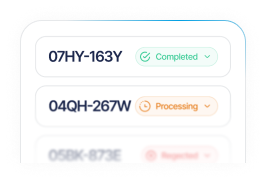
Turning Public Data Into Confident Decisions Fast
Software, experts, and unique data — the full picture, in one place.
Intelligence Rapid | Netwatchwithout the wait.
Rapid is our secure online platform for ordering intelligence that would usually be difficult or time-consuming to obtain
Whether you need a police report, OSINT data, or a complete investigation, Rapid makes the process fast, frictionless and reliable.
For Law Enforcement

What sets us apart?
Innovative & proven
Pioneers in OSINT for insurers, with 10,000+ investigations completed across insurance, legal, and law enforcement.

A highly trained in-house team.
Real investigators, not outsourced contractors.


Netwatch
Client retention rate is

5
Dynamic
The potential to cut police report turnaround from months to days or even hours.

30+
countries worldwide.
We're UK based
but investigations delivered in 30+ countries worldwide.
Every Detail. Every Angle.
We deliver cradle-to-grave investigative support — from initial checks to in-depth intelligence gathering — using advanced OSINT tools, highly trained investigators, and finely tuned processes.
Vetting / Due Diligence
Confidence before you commit.
Interviews / Site Visits
Professional, on-the-ground intelligence.
OSINT Tools
Powerful open-source intelligence integrated with Rapid.
Police Report Retrieval
Simplifying a complex process into a single click.

Online Investigations
Find every relevant detail in the public domain.
Why Leaders Trust Netwatch?
Complete investigative insight - We fill in the blanks others miss.
Proven trusted partner - Over a decade trusted by global brands without losing a single client.
From Uncertainty to Clarity
Corporate due diligence done right
Stopped a high-risk deal before it was signed.
Faster results for law enforcement
Saved millions for a leading insurer, helping them prevent fraud and improve customer satisfaction.
Fraud uncovered in under 48 hours
Collected actionable intelligence quickly using our platform, and provided decisive evidence.
Netwatch Blog
Insights That Matter
Practical tips, OSINT trends, and expert perspectives to keep you ahead of the curve.

Rapid for Police: A Secure, Free Method for Uploading RTC Reports to Insurers
Rapid for Police: A Secure, Free Method for Uploading RTC Reports to Insurers

Police Turnaround Data Now Live on Rapid
Live data on police disclosure times is now available to all users within Rapid via the dashboard screen.

Strategic Growth in Action: Investing in Talent to Power NetWatch's Next Chapter
17 new hires, 10 promotions, and big steps in talent strategy -- NetWatch is growing with purpose, focus, and fresh momentum.
Customer Success Manager
Frequently asked questions
We've gathered the most common questions we hear from insurers, solicitors, law enforcement, and corporate clients. If you don't see your question here...
Ready to see the full picture?
From a single report to a full-scale investigation, we provide the intelligence you need to make confident decisions — fast.

